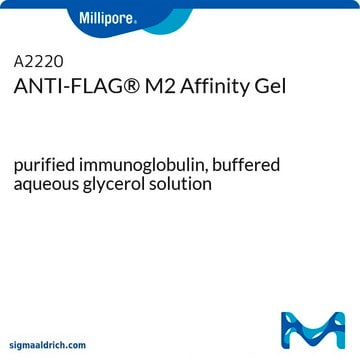Recommended Products
General description
Product Source: Protein is expressed in E.coli.
Vimentin is a class III intermediate filament protein predominantly found in cells of mesenchymal origins, such as vascular endothelium and blood cells, where it functions as a major cytoskeletal component. Due to its importance and abundance in the cytoskeletal structure of mesenchymally-derived cells, Vimentin is frequently used as a developmental marker within cells of mesenchymal origin or cells undergoing epithelial-mesenchymal transition, which can occur during both normal and metastatic growth. An active participant within several critical processes of cellular organization and protein regulation, Vimentin is involved in the anchorage of organelles within the cytoplasmic matrix, development of astrocytes, and the disassembly of cellular components during the execution phase of apoptosis. Abnormalities in the normal physiological pathways of Vimentin have been implicated in deficient motility and directional migration involved in wound healing and cellular growth and development, as well as the adhesion-site accumulation of Vimentin on lens epithelial cells in cases of dominant cataracts.
Application
Research Category
Stem Cell Research
Stem Cell Research
Research Sub Category
Growth Factors & Receptors
Growth Factors & Receptors
Physical form
Product is presented without additives and is filtered through a 0.2 micron filter before lyophilization.
Storage and Stability
Store at -20°C for up to 4 months from date of receipt Centrifuge the vial prior to opening.
Reconstitute in water to a concentration of 0.1-1.0 mg/ml. Do not vortex. For extended storage, it is recommended to further dilute in a buffer containing a carrier protein and store in working aliquots at -20°C.
Reconstitute in water to a concentration of 0.1-1.0 mg/ml. Do not vortex. For extended storage, it is recommended to further dilute in a buffer containing a carrier protein and store in working aliquots at -20°C.
Disclaimer
Unless otherwise stated in our catalog or other company documentation accompanying the product(s), our products are intended for research use only and are not to be used for any other purpose, which includes but is not limited to, unauthorized commercial uses, in vitro diagnostic uses, ex vivo or in vivo therapeutic uses or any type of consumption or application to humans or animals.
Storage Class
11 - Combustible Solids
wgk_germany
WGK 1
flash_point_f
Not applicable
flash_point_c
Not applicable
Certificates of Analysis (COA)
Search for Certificates of Analysis (COA) by entering the products Lot/Batch Number. Lot and Batch Numbers can be found on a product’s label following the words ‘Lot’ or ‘Batch’.
Already Own This Product?
Find documentation for the products that you have recently purchased in the Document Library.
Chih-Ming Tsai et al.
Journal of innate immunity, 12(4), 333-343 (2019-12-06)
Pathogenic microorganisms are sensed by the inflammasome, resulting in the release of the pro-immune and proinflammatory cytokine interleukin-1β (IL-1β). In humans, the paired <underline>s</underline>ialic acid-binding Ig-like lectin receptors Siglec-5 (inhibitory) and Siglec-14 (activating) have been shown to have reciprocal roles
Our team of scientists has experience in all areas of research including Life Science, Material Science, Chemical Synthesis, Chromatography, Analytical and many others.
Contact Technical Service








